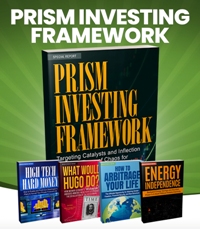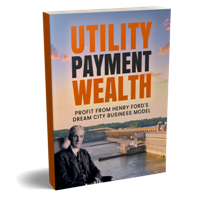 President Donald Trump and Treasury Secretary Scott Bessent want lower interest rates so they can lower the financing costs of America’s massive debt. The net interest on the debt for fiscal year 2025 is on track to hit $1 trillion.
President Donald Trump and Treasury Secretary Scott Bessent want lower interest rates so they can lower the financing costs of America’s massive debt. The net interest on the debt for fiscal year 2025 is on track to hit $1 trillion.
Federal Reserve Chair Jerome Powell has resisted daily lambasting from Trump to cut rates. Powell wants to first wait and see how Trump’s tariff policies impact consumer price inflation. Moreover, with unemployment moderately low, the CPI rising at an annual rate of 2.7 percent, and the stock market at all-time highs there is no compelling reason to cut rates.
Nonetheless, Trump’s had enough of Powell’s disobedience. This week Bessent revealed that active steps are being taken to fire Powell before his term runs out next year. He will be replaced with someone who will comply with Trump’s rate cut demands.
Of course, a sensible way to lower interest rates would be to eliminate deficit spending. With a balanced budget, the Treasury would no longer have to issue new debt. It could merely finance the existing debt. Under this scenario the pool of Treasuries would no longer be expanding.
As the supply of Treasuries is reduced the continued demand would likely drive interest rates down. This would help Trump and Bessent achieve their desire for lower interest rates.
But instead of forcing Congress to balance the budget, Trump pushed his One Big Beautiful Bill Act. The combination of tax cuts and spending increases will add over $3 trillion in additional debt – over and above the already projected debt – over the next decade. This will blow the national debt out to over $60 trillion by 2040.
Can Tariffs Reduce the Deficit?
The addition of all this new debt makes the prospect of lower interest rates highly unlikely. Still, Trump thinks he can influence the budget through other means. His big idea is to generate revenue from tariffs. He believes this will reduce the budget deficit.
Until the monthly Treasury Statement for June was reported, it appeared the U.S. government was on track to run a budget deficit of $2 trillion for fiscal year 2025. But something remarkable happened in June. The U.S. government ran a surplus of $27 billion. This is on the heels of a $315 billion deficit in May.
Of note, the $27 billion surplus was the first time there has been a budget surplus in June since 2017. In June 2024, there was a $71 billion budget deficit. Tariffs do appear to have had a positive effect on the budget.
The monthly Treasury Statement shows that custom duties for June were $27 billion. This is up from $22 billion in May. What’s more, since October, total tariff revenues are $108 billion, which is the highest they’ve ever been for the first nine months of a fiscal year.
At this point in the 2024 fiscal year, only $56 billion in custom duties had been collected. And for the full 2024 fiscal year custom duties totaled just $77 billion.
At a recent White House cabinet meeting Bessent noted that the U.S. could grow its tariff revenue to $300 billion by the end of the 2025 calendar year. Trump said he believes “the big money will start coming in on August 1.”
Trump, however, didn’t elaborate on where the big money will come from…
Tariffs are Taxes
The status of Trump’s “on-again, off again” tariffs is hard to keep up with. As we understand it, the average U.S. tariff rate increased from 2.5 percent to an estimated 27 percent by April 2025, the highest in over a century.
Trump’s apparent strategy has involved announcing tariffs, then pausing them for negotiation periods, only to re-impose or adjust them. If you recall, after announcing reciprocal tariffs on Liberation Day, April 2, 2025, a universal 10 percent tariff took effect, with additional tariffs for 57 trading partners initially planned but then paused for 90 days when Wall Street panicked.
The pause on reciprocal tariffs has now been pushed out to August 1, with Trump sending letters to countries detailing new tariff rates. These new tariffs are why Trump expects the “big money” to start coming in on August 1.
Certainly, reducing the budget deficit via increased tariff revenue sounds like a positive outcome. But what are the consequences?
Trump’s trade tariff policies are designed to protect domestic production, bring manufacturing jobs home, and reduce America’s massive trade deficit. However, there are two sides to every coin. The flipside to Trump’s trade policies is higher prices.
Very simply, tariffs are taxes. They are not paid by foreign producers out of some generous desire to subsidize American consumers. They are duties levied on imported goods. And like all taxes, they are ultimately paid by the end-user. In this case, American consumers.
For example, when Trump slaps a 10 percent, 25 percent, or even a 60 percent tariff on goods from China, Europe, Mexico, or anywhere else, that cost is absorbed into the price of those goods. Importers pay more, distributors pay more, retailers pay more, and eventually, you pay more.
Fire the Fed, Raise Tariffs, and Hope for the Best
Tariffs, and their associated effects, will touch just about every consumer good that people regularly buy and use. The clothes people wear, electronic gadgets they use, the car components they rely on, and raw materials for manufacturing. As you know, a significant share of these originate from beyond America’s borders.
When tariffs are imposed, the cost of bringing these goods to market escalates. Businesses, operating on razor-thin margins, have two choices. Absorb the cost and potentially go bankrupt or pass the cost along to the consumer. Most retailers will choose the latter, as this is the inevitable path of survival.
But the inflationary impacts don’t stop there. Tariffs, by their very design, are meant to make foreign goods less competitive. The objective is to give domestic producers an advantage.
These protectionist policies result in higher consumer prices. They also reduce the competitive pressure that keeps prices in check. With less competition from abroad, domestic industries face reduced incentives to keep their prices low.
Why innovate? Why cut costs? Why offer discounts?
If the playing field is artificially tilted in the favor of American producers, they can simply raise their prices to match the now-inflated cost of imports. This is the downside of protectionism. It breeds complacency and, ultimately, higher prices for everyone. It also reduces the choices consumers have and generally leads to lower quality goods.
Trade tariffs also mess with the broad and complex economic supply chain. A tariff on steel, for example, doesn’t just make imported steel more expensive, it makes everything that uses steel – from cars to refrigerators to construction materials – more expensive.
The cumulative effect of these actions is a direct assault on the purchasing power of the average American. Your hard-earned dollars buy less. Real wages decline. The cost of living goes up.
Tariff induced higher prices act as a stealth tax on every household. This erodes savings and makes it harder for families to make ends meet. Gambling to close the budget deficit through massive trade tariffs and artificial rate cuts is madness. The consumer – that’s you – will be the one who pays the “big money” Trump’s counting on.
The real solution is to cut spending. Yet politics won’t allow it.
Thus, the folly continues.
[Editor’s note: Have you ever heard of Henry Ford’s dream city of the South? Chances are you haven’t. That’s why I’ve recently published an important special report called, “Utility Payment Wealth – Profit from Henry Ford’s Dream City Business Model.” If discovering how this little-known aspect of American history can make you rich is of interest to you, then I encourage you to pick up a copy. It will cost you less than a penny.]
Sincerely,
MN Gordon
for Economic Prism
Return from Fire the Fed, Raise Tariffs, and Hope for the Best to Economic Prism





Congress could revoke its charter and end the Fed but the treasonous gutless globalists Congress critters like things the way they are since 1913.
What a fine mess we are all in. Seems there is no turning back at this point from the edge of financial ruin for the USofA, no matter who is in charge in Washington. Hopefully my kids and grandkids will weather the storm, for myself at 75 I won’t see the worst of it.
Awesome